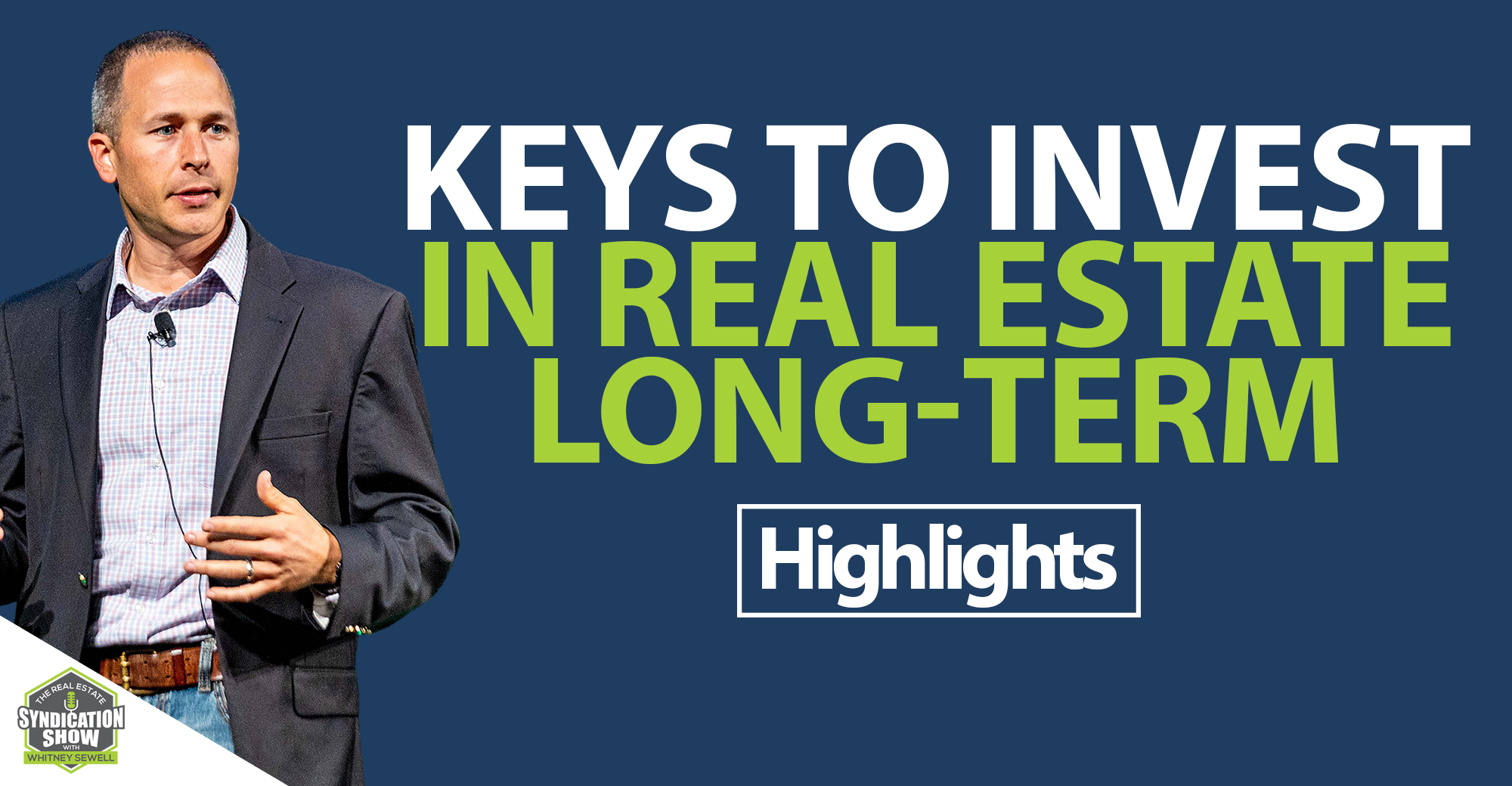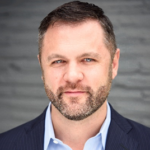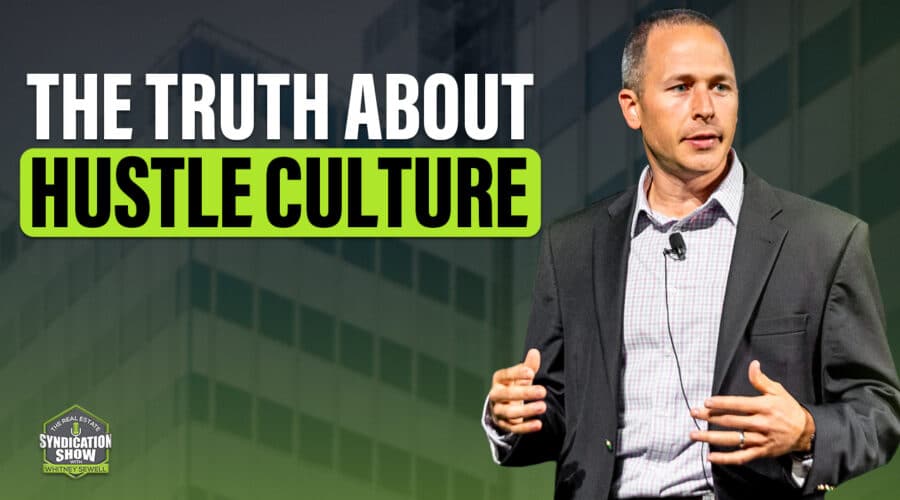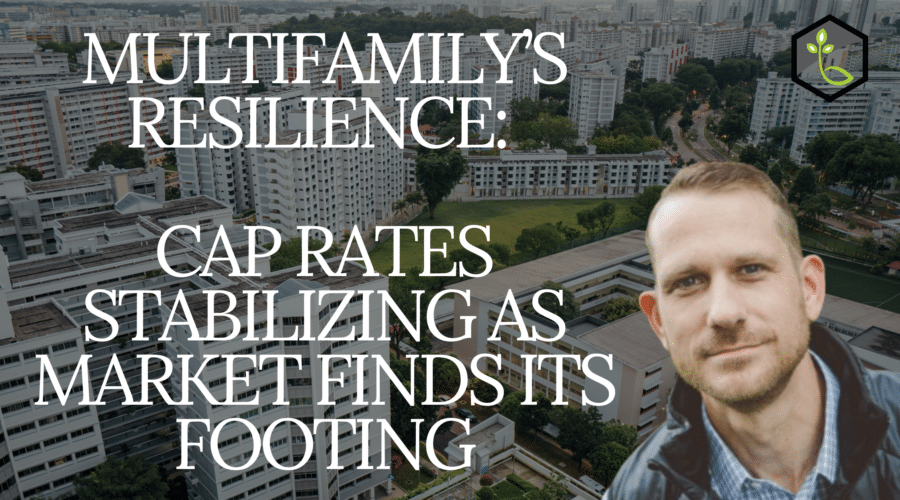
If you want to build wealth through real estate investing, doing it long-term is one way to secure that you are building a stable wealth. In today’s #Highlights episode, we feature our conversations again with successful real estate entrepreneurs Marco Santarelli and Lee Kearney. The two share valuable tips on how you can invest in real estate long-term.
Our Gracious Sponsor
How do you make sure that you are investing with a “good” operator? Dan Handford and his wife are currently invested in 54 different passive real estate syndications with 16 different operators in 10,000+ doors. They use this exact list when deciding whether or not to invest with a particular group. Get access to the “7 Red Flags for Passive Real Estate Investing” to be confident in your next investment! https://www.passiveinvesting.com/redflags/
Watch the episode here:
Listen to the podcast here:
Marco shares ten tips for successful long-term real estate investing. Meanwhile, Lee tells us why he is more risk-averse than your average syndicator and why this has not been a problem in his work at all. Click the play button now and hear many valuable tips about investing!
Key Points From This Episode:
- Why the best investment people can make is investing in themselves?
- Understanding the benefits of setting investment goals.
- How should you structure the goals in order to ensure they are achievable?
- Cash flow is the glue that holds the deal together.
- Invest in a market that makes sense, even if it is not where you live.
- What does it mean to take a top-down approach and how to use it?
- Reasons to geographically diversify your real estate portfolio.
- Use full-service, professional property managers, not a realtor.
- It is better to maintain control of your investment, rather than having paper assets.
- Take your investment capital and leverage it.
- How Lee accidentally found his way to the real estate business!
- The transition Lee made from a rehabber to a wholesaler.
- The locations of most of Lee’s property across the country.
- Data collection and the massive amounts of real-time data that Lee now has.
- Understanding the market cycle of single and multifamily deals.
Tweet This!
“The best investment anyone could ever make is an investment in themselves.” – Marco Santarelli
“Ignorance is expensive. What you don’t know is costing you money.” – Marco Santarelli
“Knowing that all real estate is local and every local market has its own real estate cycle, its own economics, its own business climate, its own tax base, its own supply, and demand, you have to understand that all markets operate independently of each other.” – Marco Santarelli
“take your investment capital and leverage it, because when you can leverage your investment capital four to one, or five to one, what you’re essentially doing is you’re magnifying your overall rate of return and you’re accelerating the rate at which you create wealth.” – Marco Santarelli
“One, there is always money in real estate. Two, you got to be on the right side of the trade.” – Lee Kearney
“What I would say to everybody out there, don’t go into deals where you’re stretching your debt coverage service ratio. You’re just barely able to make your payments because the reality is if you have one house and one thing goes wrong, if you own a hundred doors, that’s 100X the CapEx you got to spend on that property or repairs and maintenance. You need to have those reserves and make sure that you’re able to pay bills and operate these buildings effectively.” – Lee Kearney
Links Mentioned in Today’s Episode:
WS321: Ten Tips for Successful Long-Term Real Estate Investing with Marco Santarelli
WS367: Creating a Well-Oiled Real Estate Machine with Lee Kearney
About Marco Santarelli

Marco Santarelli is an investor, author, and the founder of Norada Real Estate Investments – a nationwide provider of turnkey investment property. Since 2004, they’ve helped thousands of people create wealth and passive income with real estate. He’s also the host of the Top-rated Passive Real Estate Investing podcast.
About Lee Kearney

Lee Kearney is one of the nation’s most successful single-family real estate investors. Since 2004, he has bought/sold 7,000+ properties and is known as the expert in leveraging real estate market cycles. He now owns several real estate businesses in Florida, all operating under the Southeast Property Investments Network (SPIN) brand, to fix and flip properties across the U.S., with a total sales volume exceeding $50M in 2017. Lee taps into his expertise and passion for mentorship to educate others on leveraging market cycles to grow their own real estate businesses. His education platform FLIP YOUR INCOME offers several levels of training designed for beginning investors, mid-level operators who wish to scale their operations, and seasoned investors looking to manage their profits In late 2013, Lee co-founded a medical marijuana startup dedicated to serving the medical cannabis market in Florida. This is slated to be a vertically integrated company that will manufacture and distribute a world-class medical product line, serving patients with severe or debilitating illnesses upon recommendation from a licensed physician in accordance with state regulatory guidelines. Lee also has sizeable investments in several other companies in different sectors with the income he’s generated from real estate.
Full Transcript
EPISODE 1239
[INTRODUCTION]
0:00:00.0
Whitney Sewell (WS): This is your Daily Real Estate Syndication Show and I’m your host, Whitney Sewell. Today is a Highlights show that’s packed with value from different guests around a specific topic.
Don’t forget to like and subscribe but also go to LifeBridgeCapital.com where you can sign up to start investing in real estate today. I hope you enjoy the show!
[INTERVIEW 1]
0:00:24
WS: Our guest is Marco Santarelli. Thanks for being on the show, Marco.
0:00:27
Marco Santarelli (MS): Whitney, I’m honored to be here. Thank you so much for inviting me on.
0:00:30
WS: I knew, you have some specific rules that you’ve seen to be true and to help people to be successful in real estate investing and I’m looking forward to getting into those. Let’s get started.
0:00:40
MS: What happened is over the years through my successes and failures, I’ve come up with these rules. I’ve refined them a little bit over the years in the beginning, but they have essentially become perennial. They live on and on because they are fundamental. They don’t change. It’s almost like, you expect the sun to come up every morning over the horizon. It does because that’s just the law of the universe.
What I have found and this is my first rule, Whitney is that the best investment anyone could ever make is an investment in themselves. Before we started recording, we had a very short conversation about masterminds and joining a mastermind group. I told you some of the ones I was in and we’re going to actually talk more about that. That’s just one of many ways to invest in yourself.
I find that knowledge is the new currency. The more you invest yourself, there’s that saying, the more you learn, the more you earn. There is a lot of truth to that. Whenever I talk to audiences, I always ask them to finish the sentence, ignorance is blank. What do you think they say, Whitney? I’m sure you’ve heard this before. Ignorance is bliss.
0:01:41
WS: Oh, yes. Of course.
0:01:42
MS: Yeah. I have to correct them. I say, well no, that’s not necessarily true. Ignorance is expensive. What you don’t know is costing you money. There are times when we know what we don’t know, but there are often times when in fact, most of the time when we don’t know what we don’t know. The problem is that is you’re doomed to follow other people’s advice if you don’t know if the advice they’re giving you is good or bad. It helps you in every aspect. Knowledge will help you become a great investment if you’re just a good investor and it helps you to become a good investor if you’re just starting out, or you’re hoping, not a bad investor.
That knowledge is what is going to help you ultimately build that past a stream of income, so you can support yourself and your family and create generational wealth. Rule number one is to educate yourself.
0:02:26
WS: Nice. Okay, so we’re going to educate ourselves. What’s next?
0:02:29
MS: Many of your listeners have heard this many times over and that is the set investment goals. I can’t tell you how powerful that is. It sounds woo-woo, or wonk,y or ethereal, but the reality is when you actually take a pen and put it to paper and you write down, or maybe type it on your computer, what your investment goals, you set some force in motion in the university. You ultimately take what is essentially a wish for yourself and you start to materialize that.
You can wish to be rich, but that doesn’t mean that you’ll ever become rich, or you’ll take the steps to be rich. When you set very clear and specific, measurable investment goals, what you’re ultimately doing is taking that first step to creating a roadmap and an action plan to become financially independent. This has been proven time and time again. Universities have studied this with people over the years from school age to career, that you are statistically far more likely to achieve your financial goals and become financially independent when you write your goals down.
Write detailed goals. They must be specific, measurable, they need to be realistic, they must be attainable and there needs to be timestamp on it. Now if you don’t hit that time, like if you set a one-year goal and you miss it and it took you a year and three months, that’s okay. The fact is you actually put in motion the fact that you have a timeframe to achieve that and you’re taking the steps to do it.
You definitely want to create goals, especially around finance, like your investment goals. How many properties, how many units, how much capital are you going to deploy into other people’s projects, whether you own that real estate, or whether it’s apartment syndication, or whatever the case is, write it down. Make it real for yourself.
0:04:09
WS: What’s the next one?
0:04:10
MS: The third thing is something we saw a lot of in 2003, 4, 5, and even into 06. I’m sure you remember this. We had a lot of people who thought they were investors and they were buying a bunch of property here, there, and everywhere and watching the price of that property increase through ridiculous appreciation, which was all about speculation. That’s my rule is to never speculate. You see, you should always have a long-term perspective in mind and you don’t want to be chasing after appreciation. Even in a heated market, that’s experiencing double-digit returns, that’s not investing, that’s just purely speculation.
What you want to do is invest in imprudent well-chosen markets, don’t chase after appreciation, and invest in prudent value plays where the numbers make sense right from the beginning. You want to be cash flow positive from month one. The equity will take care of itself over time, it’s just something that real estate does through amortization and through the inflation in the market, which causes appreciation, like natural organic appreciation.
Don’t be a speculator, because that is not investing. You could get yourself into trouble and we all know what happened in 2006-2007 when people got caught with their shorts down, holding a bunch of properties that couldn’t cash flow and they were upside down on them, in terms of equity. Don’t speculate.
0:05:29
WS: Okay. All right, so we’re not going to speculate. What’s next?
0:5:31
MS: Number four dovetails off of number three. That is to invest for cash flow. There are very few exceptions to this rule. Ultimately, when you invest in real estate you want an immediate return. What do you want? You want a cash-on-cash return. The higher that return, the better, because there are different forms of returns with real estate. You have your immediate returns through your cash flow, essentially it’s your cap rate, but when you leverage, you have a cash-on-cash return.
Then on the backend, you have your appreciation and your amortization, which gives you the equity growth. I like to refer to cash flow as the glue that holds your deal together. Your equity will grow over time, but the cash flow covers all your operating expenses and your debt service, so as time goes on, you have real spendable or investable cash from the property and you can reinvest that. Then as time goes on, you have the true wealth that gets created because of real estate. That’s why you should invest in cash flow because the equity will take care of itself. It happens. The cash flow is the glue that holds your deal together.
0:06:30
WS: Very important. Yeah, again, if it’s not cash flowing, it’s so risky, right? It’s so risky if it’s not already cash flowing. When something breaks, something happens, you’re already hurting in a bad way. All right, so we’re going to invest for cash flow and we’re not going to speculate. What’s next?
0:06:44
MS: The United States is made up of over 400 metropolitan statistical areas. It’s a very large country with a lot of markets to choose from. We’ve all heard the saying that real estate is local. Now there’s a lot of truth to that because what happens is let’s say Austin, Texas is different than what’s happening in Memphis, Tennessee, which is different than what’s happening in Detroit, Michigan. Knowing that all real estate is local and every local market has its own real estate cycle, its own economics, its own business climate, its own tax base, its own supply, and demand, you have to understand that all markets operate independently of each other.
What you want to do is pick a market that makes sense fundamentally, economically. You should only be investing in markets that make sense from the beginning and not because you live there. A lot of so-called gurus suggest that you invest within a one or two-hour radius of where you live, that’s flawed advice, because you may not be a lucky person in the sense that you live in a market that actually makes sense from an economic and fundamental perspective. It might be overpriced, portability might be very low, the cash flow numbers don’t work.
If you’re buying an $800,000 single-family home like what you find here down where I live, you can only rent it for $4,000 a month. I’m using single-family homes as an example. You can apply this to apartment complexes as well, just dealing with bigger numbers. Those metrics don’t give you the returns that should have in investment. I’m not suggesting you time the market, but there is an element of timing and you don’t want to buck the trend within a market, but you do need to be market agnostic. That’s the point is you want your investment capital to work as hard as possible for you, so put it into the markets that are going to protect your investment capital and allow it to grow as reliably as possible.
0:08:32
WS: All right, so what’s next?
0:08:35
MS: Number six is to take a top-down approach. A lot of investors and I’ve done this myself, get sold on a property, they get mesmerized. They’re talking to somebody, or they come across a property on the MLS for Zillow, and they love the look of it, they love the condition. They look at the numbers on the pro forma and it’s very attractive. There are many sketchy properties out there that have great numbers, but it’s not a good deal.
The whole concept of taking a top-down approach means that you don’t start with the property. You start with the market. You start with the market and work your way down to the sub-markets after you’ve chosen the market. Then you look at the neighborhoods. Then you look at the properties. Then while you’re doing all that, you’re working with a very high-quality, reputable, trustworthy team.
0:09:21
WS: Nice. Okay, so appreciate you elaborating on taking the top-down approach and some things we need to think about when choosing a market. What’s next?
0:09:28
MS: You talk to a financial planner. They always talk about diversification, which is really just throwing more money on Wall Street into different paper assets. This line of thinking merit is that you are hedging your risk, but really, you’re still investing in more of the same stuff that you have zero control over. When you diversify with real estate, what you’re doing is you’re diversifying geographically across different markets. Often, that means in different states.
0:09:54
WS: Awesome. Okay, so now we’re diversified, and what’s next?
0:09:58
MS: Well, I actually mentioned management. Use professional management. That’s number eight. I don’t mean just property management. I mean, professional management. I made the mistake many years ago of using a real estate agent as a property manager in one of my markets. It started off all well and fine, but her full-time interests were involved in buying and selling. Well, not so much buying, but selling real estate as an agent. She wasn’t focused on the management side. Then ultimately, things went downhill and she ended up stealing money from me. That didn’t work out too well.
The key here is to use full-service professional management, so that way you can allow them to manage your assets and you can move on with your life, focus on your career, your family and invest in more properties, find and invest in more deals, more properties, more apartments, whatever it may be.
0:10:47
WS: All right, so we got professional management, and what’s next?
0:10:51
MS: Number nine is really about maintaining control. Now this means that you either own those properties in your portfolio in your entities that you control, or you are working with a quality professional syndicator that has those deals, those apartment complexes, whatever they may be in an entity that you are a member-owner of. You see, in real estate, you never technically want to own the real estate. You want to control all the real estate. You want it owned in entities that you control, so that’s the whole asset protection angle on this thing.
0:11:24
WS: What’s the 10th one?
0:11:25
MS: This is one of the most powerful things about this an the asset class. I know you love this and I love this too. Just imagine that you can invest in something where you can put as little as 20% down towards purchasing an asset and borrowing the other 80% using other people’s money, OPM, and actually controlling 100% of that investment, getting 100% of the cash flow, 100% of the tax benefits, 100% of the equity growth and appreciation, but you’ve only had to put 20% or 25% down on it. That’s the power of real estate and that’s what number 10 is all about is to take your investment capital and leverage it, because when you can leverage your investment capital four to one, or five to one, what you’re essentially doing is you’re magnifying your overall rate of return and you’re accelerating the rate at which you create wealth.
[INTERVIEW 2]
0:12:17
WS: Our guest is Lee Kearney. Thanks for being on the show, Lee.
0:12:20
Lee Kearney (LK): Thanks for having me.
0:12:22
WS: Tell the listeners a little more about who you are and let’s jump into how you’ve built this business.
0:12:25
LK: Sure. Well, I started back in 2003. I was living in Ireland at the time. I’ve bought a condo, got broken into. It was a penthouse. Moved out. No one wants to live in a place after they get broken into. Thank goodness I was able to move back in with my parents at the time. Put the property in the market and sold it and made 35,000 Euro profit approximately.
What struck me about that is I made more money on that deal than the job I was working at the time, and that’s when the light bulb went off for me. So I decided when I moved to California in 2004, I was finishing my master’s at the time, I found a coach, someone who I’ve gone to church with. He was able to drive me around, look at properties. As I followed him around and watched what he did and asked lots of questions. Helped him cart materials from Home Depot, just whatever I could do to assist. What I realized was I just needed to buy in this area, at this price point, with this amount of money, and to sell at this price. I said, “Okay. I can do that.”
So I have the information at hand. Was guns blazing? Went out to the market. Super hard market in San Bernardino. It took me 4 months to find my first deal. I guess for anybody out there, if you think that you’re striking out in day one or day two, I did this for four months to find my first intentional flip. Finally took it down through an agent, a probate deal on the market. I was able to buy it with hard money. So I borrowed that. I had some cash of my own, which I used for the renovations. Hobbled the property together, somehow even doing exactly what I was told to be putting out the signs and waiting for all the buyers to come. 50 people came. Made 30,000, 35,000. The deal sits right outside my office, which is a reminder to me every day of where I started and decided to repeat the process.
I did my second property. Made my first and second mistakes on that second property. I had moved back to Florida. So I tried to remotely rehab it, and I had a friend do the rehab. Complete disaster on both fronts. Somehow stumbled through that rehab. Got out the backdoor, because California was actually starting to slide at the end of 2004. So I made I think by the end of the middle of 2005, when I finally sold it, made 10, 12 grand, but it wasn’t a loss. So I was delighted to get out of that house. Decided to learn about foreclosures.
So I asked everybody I knew, “Do you know about foreclosures? I heard that that’s where you get deals.” Didn’t really know what a foreclosure was, which is funny to me now that that was only 14 years ago. But I’m asking the questions that I’m telling you about. I guess my point for everybody out there, is there is no dumb question when you don’t know.
So found a friend’s father who is buying at the courthouse steps, and I asked questions like, “What are the courthouse steps?” “What is a foreclosure?” “Why are numbers being auctioned?” There were case numbers. The case number represented a house. Found a person selling the book that turned the numbers into addresses, and the rest is really history there because I bought my first and second and third and I used everything from bootstrapping credit card debt to an instant line of credit from Bank of America as soon as I got the title. I was able to grow a multimillion-dollar portfolio in about 18 minutes.
Then along came 2007. I got off my honeymoon with my wife at the time when I said, “We’re done. We’re broke.” The market had turned. I was still buying and selling and rehabbing into a downward market, which you couldn’t have told me this back then. I just didn’t know what I didn’t know. I didn’t have a mentor. I guess if I had a mentor, I probably could have pulled out of the fire.
But the reality was I would have needed and pulled out of that fire a year and a half previous to when I actually crashed. So I had all these rentals. They were overleveraged. Not cash flowing. Rehabs, I was selling at a loss. Ended up having to stop paying off all of my debt and renegotiate everything, short sales, write off the uncollateralized debt. It was terrible.
So most of 2008, I was cleaning up my credit through 2009, but I had to make money. So what I realized is two important lessons, and I’m sharing these with everybody because I lived this firsthand. So a lot of people now are in real estate as we’re doing this show. They’ve been experiencing an upward market, extremely low rates, and everyone thinks they’re amazing. They’re buying deals, and I just closed in 100 doors, in 200 doors, and 500 doors, and I’m amazing. The reality is there is a lot of things operating in people’s favorite today. That has not always been the case.
2008 I realized two things. One, there is always money in real estate. Two, you got to be on the right side of the trade. I immediately flipped from being a rehabber to being a wholesaler. That completely took the market risk-off of me. Put it on my buyers, who actually were getting good deals at the time. I was making 5, 10 grand assignment fees. As I was digging my way out of the hole from 2006 and 2007, I made about a million bucks my first year wholesaling.
So the rest of history after that. The opportunity was wholesaling, wholesaling, a little bit of rehab. Transitioned into a lot of rehabs. Sold a lot of turnkey properties to overseas buyers, and then several thousand deals later here I am today with a mature company. I’ve got systems and processes. I got people in some cases that have worked for me now for 10 years. So it’s a well-oiled machine. We put a widget on one end and comes out the other, and we make a profit, and it’s pretty straightforward.
So I like single-family because I understand it. I bought and sold multifamily. But right now, I’d look across the board and the only thing that attracts me today is the cheap long-term debt. Everything else scares me to death because I see prices, I see assets trading for two and three and four times what I sold them for back in 2008. That’s why everyone has to look through this through their own lens. My lens is that I made and lost $2 million in two years 12 years ago, and I just don’t want to do that again.
I would say I’m probably more risk-averse than the investor coming into the market in the last couple of years, but there is always money in real estate. Like I said, I made that statement a few minutes ago, and the good news is I think with multifamily that’s cash flowing or single family that’s cash flow, and I’ve lots of students out there who can attest to this. They rode the market out even though their balance sheet was upside down because they have positive cash flow.
What I would say to everybody out there, is don’t go into deals where you’re stretching your debt coverage service ratio. You’re just barely able to make your payments because the reality is if you have one house and one thing goes wrong, if you own a hundred doors, that’s 100X the CapEx you got to spend on that property or repairs and maintenance. You need to have those reserves and make sure that you’re able to pay bills and operate these buildings effectively.
I do think there’s going to be away because of the cheap debt. Again, it’s just like people buying cars. Cars, 300 bucks a month. They don’t have to look in what the sticker price is. My big fear for a lot of new investors, they’re not looking at the sticker price. They’re looking at the arbitrage in cash flow and they think it’s – Let’s take multifamily. You take a lot of people after their takeout debt, 80%. They may be cash-flowing 100 bucks a door.
I’ve owned properties for over a decade. 100 bucks a door is extremely tight, and you time that 100 if you got 100 units. That’s a very, very thin line that people are writing. Then on top of that, if you take the people that are buying at retail deals, which is where the problem starts, whether it’s single-family or multifamily. If you’re not buying at wholesale, you have no cushion.
Now, think about this. If you’re getting your first stack at 80% and you’re paying retail, you’re bringing in equity partners at 20%. You’re 100% leveraged on that deal. That to me just is a very scary proposition. That’s why I encourage everybody. It doesn’t matter if it’s single-family or multifamily. Always buy at wholesale. Really, I would say 70% is your max, 60%, 65% is great because that means you can cash out at 80%. You can have a reserve of cash, which you should not spend, by the way. You should keep that for a rainy days. Also, it will boost your balance sheet. That way then, if you do come across big repairs or you’ve got big vacancies or big problems in any of your units, you have reserves there to cover it. But I just see a lot of the same mistakes coming back. They’re just coming back at a different form this time.
I’m interested to see where all this is going to be a year from now, two years from now, and three years from now. I would say that every market is different. But Florida, for sure, we’re already sliding the other direction. Single-family in South Florida, I’ve seen a slowdown. I’ve seen the comps at a high point in 17 and coming through 18. They’ve been starting to decline in 19 that are doing the same fall in the same trend.
Every market is different, but in these cyclical markets like Florida and California, Arizona, Nevada, you’ve got problems. There are definitely problems on the horizon, and it’s time to be cautious and look at the market risk and not just the pure numbers.
0:21:19
WS: Are most of those 7,000 a unit are properties in Florida?
0:21:23
LK: The majority of them were. Yes. Probably about 6,000, but in the last couple of years we’ve diversified and gone nationwide. Yes, the majority of those properties have been in Florida.
0:21:37
WS: I just thought that many units, that many turnovers in that amount of time, you must have just a massive amount of data that’s valuable as well being able to understand and see some of the things that have happened over the last decade.
0:21:49
LK: Real-time. In real-time, we see it. We pulled out – A lot of markets in Texas were competing against a new builds that is selling less than building cost because builders are just trying to dump their assets. It’s crazy. So we’d buy and use the asset. Even if it was two or three years old, we couldn’t compete with brand-new construction.
So I see this stuff in real-time, and this is where my data is good because it’s real data and real-time and not the news, which typically is trailing six months through a year behind. When you see on the news that there’s a housing crisis, that housing crisis probably happened a year previously.
[END OF INTERVIEW]
[OUTRO]
0:22:24
Whitney Sewell: Thank you for being a loyal listener of The Real Estate Syndication Show. Please subscribe and like the show. Share with your friends so we can help them as well. Don’t forget to go to LifeBridgeCapital.com where you can sign up and start investing in real estate today. Have a blessed day!
[END]
Love the show? Subscribe, rate, review, and share!
Join the Real Estate Syndication Show Community:




